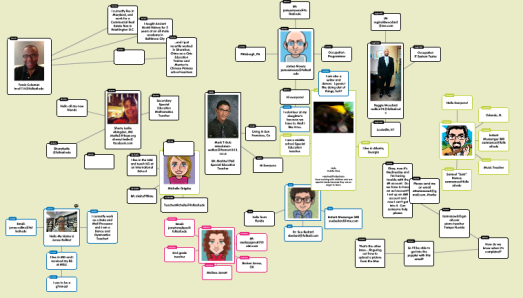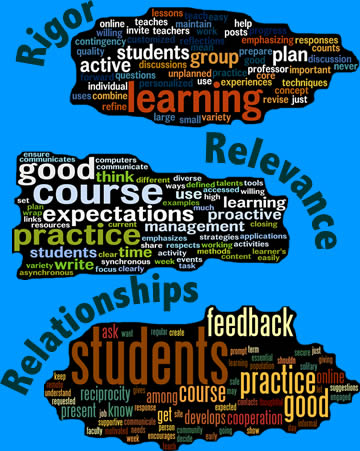When I started teaching online, I started with the “get to know me” slides. I shared some personal information as well as some teaching credentials. My purpose was for my students to get to know me and some of the things I was passionate about. Part of the problem I had with this is that I bored myself! Of course if I was bored with it my students must also be. It was at that point I realized most of my “lecture ” information must be boring as well. I needed to make a connection to my students and then to the material.
First I created a very short video about me. I offered the video to the students before coming into the live session. Most of the student I had spoken to through the email prior to coming into my class as their final project advisor. I felt like I knew most of them but they did not really know me yet. Because of the video and the several back and forth emails a comfort level was developed prior to that session. More importantly I began to create a more interactive session with the use of several Web 2.0 tools. I am no longer the only one directing the conversation. I include all of my students several times through the 1 hour session.
The first thing that happens when collaborating live without knowing the other people in the space is fear. No one wants to be the first to add to the document or add to the creation. However once that fear is reassured, an amazing amount of learning takes place. I make mistakes and others help me correct them. Once this happens confidence increases and others are wiling to try know ing that help is immediate.
Let’s share a more concrete example. If you are not familiar with Popplet.com please check it out. It is a real time tool I use for brainstorming or to get know each other. Previous to attending the session all of my students create an account using their school email. Then I invite them to share my Popple during the live session. Most of the students have never used this tool before so it is a great learning experience. I very quickly show them how to use it…double click and type. Then we start sharing information about ourselves. We add text and images and various ways that we communicate virtually.
But more importantly a community is developing. They begin to help each other. They load images and video to give us a better sense of who they are. The next step is to move the conversation to a discussion board. I post an image of the Popple, like the one here and ask for their impression of the activity.
In their post reflection of this activity many have commented about the ease of use and a great way to break the ice. Some have said it gave them the confidence to try something new and be willing to make mistakes. I thought that was very reflective and a fantastic learning gain. Learning from mistakes is a great way to gain experiences and move forward.
I have many more of these activities that I do throughout my course. It is crucial in developing virtual community and long term support. Lesson learned here for me is online students need to engage with the instructor, with their peers and with the content. We have the tools to make all of that happen. It is a matter of doing education differently. A strong community of learners leads to a strong collaboration with amazing outcomes.


